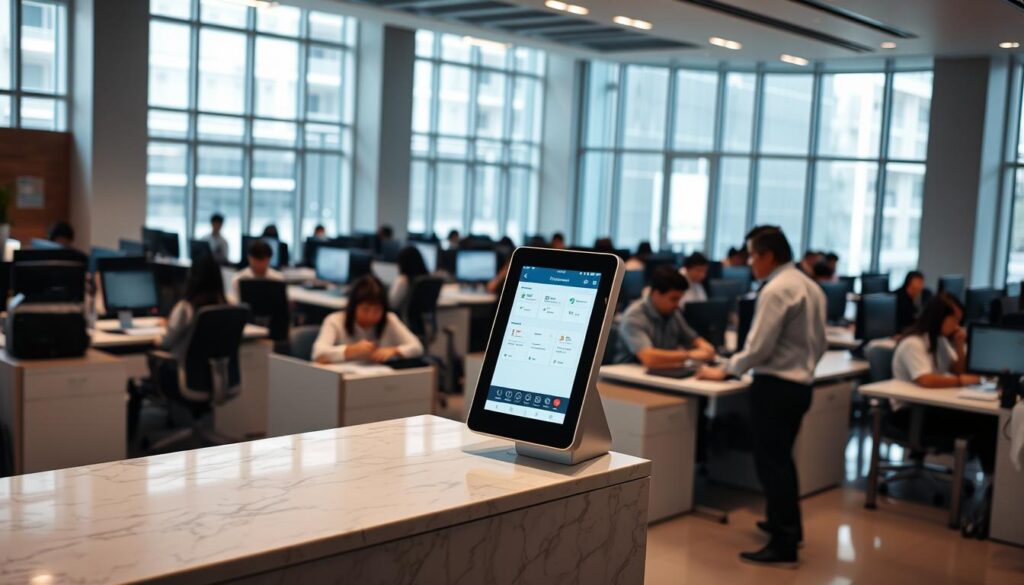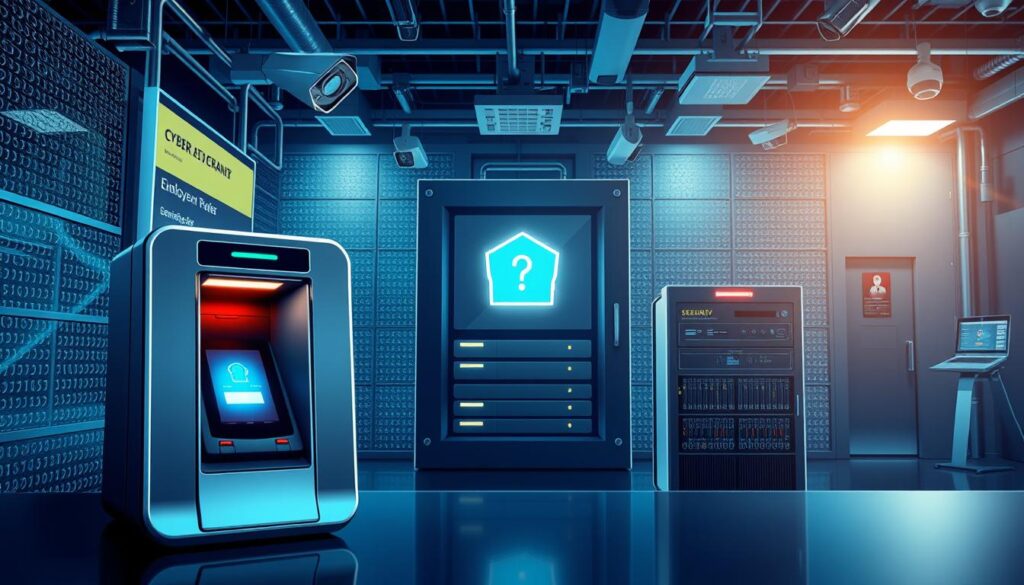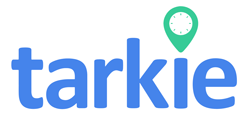In today’s world, data breaches are common. How ready is your company to keep employee data safe? Automated attendance systems make managing work easier but also risk personal and financial info. For small and medium businesses in the Philippines, keeping data safe is more important than ever.
Not having strong security can hurt your business a lot. This includes fines, lawsuits, and losing employee trust.
Recent studies show 83% of companies faced a data breach last year. And 60% of small businesses closed within six months after. It’s key to have good plans for keeping employee data safe. This helps create a safer work place and follows rules like the GDPR.
From knowing the rules to using top security, keeping data safe is a big job. It’s vital for keeping your team’s trust and following the law.
Learn more about keeping your data to boost safety and morale at work.
Key Takeaways
- Strong security systems are key to protect employee data.
- Regular security checks find weak spots in data handling.
- Good access controls lower the chance of data breaches.
- Multi-factor authentication stops almost all cyber attacks.
- Training employees is important to avoid mistakes that can harm data.
- Knowing the rules is crucial for keeping your business strong.
The Growing Importance of Employee Data Security
As more companies move online, keeping employee data safe is more important than ever. Protecting employee information helps prevent unauthorized access and builds trust. With 46% of cyberattacks hitting small businesses, keeping records safe is key to keeping the company strong.
Understanding the Need for Robust Security Systems
The shift to digital data brings new risks. About 41% of small businesses have faced cyber threats. Preventive steps can help avoid the 106 million pesos cost of a ransomware attack. Strong security systems are vital for protecting employee data and following changing laws.
Regulatory Compliance and Legal Implications
Knowing the law is crucial for keeping employee data safe. The U.S. has many laws like HIPAA and GDPR to protect personal data. With 19 states having their own privacy laws, ignoring these can lead to big fines and damage to reputation. Understanding these laws helps companies stay ahead in protecting employee data and improving their image.

Introduction to Automated Attendance Systems
Automated attendance systems are a modern way to track when employees are at work. They use technology to make tracking attendance easier and more accurate. This is important for businesses that want to improve how they manage attendance.
What Are Automated Attendance Systems?
These systems are digital tools that keep track of when employees are present. They offer features like real-time tracking. This lets managers see attendance data as it happens.
Systems like these reduce errors by up to 40%. They also make payroll more accurate, improving it by 20% to 40%.
Impact on Employee Data Management
Automated attendance systems change how companies manage employee data. They help follow labor laws better because of their accurate records. HR teams can use these systems to analyze attendance patterns and make better decisions.
For example, tools like TeamSense and Jibble make managing attendance easier. They also protect employee data and help keep the workforce reliable.

Key Features of Security Systems in Attendance Management
In today’s workplace, keeping employee data safe is a top priority. Attendance management systems have strong features to protect this data. They track data in real-time and use advanced encryption to keep it safe.
Real-Time Data Tracking
Real-time tracking lets companies watch attendance and spot issues fast. It helps keep operations smooth and builds trust with employees. Quick action on any problems helps in making better decisions.
By using strong cyber security, businesses can keep data safe from hackers. This reduces the risk of data breaches.
Data Encryption Techniques
Data encryption is a key defense against cyber attacks. It makes data unreadable to anyone who shouldn’t see it. This is very important for companies that need to follow strict data privacy laws.
With good encryption, companies can protect their reputation and make employees feel safer about their data.
| Feature | Description | Benefits |
|---|---|---|
| Real-Time Data Tracking | Continuous monitoring of attendance data | Enhances operational efficiency and builds trust |
| Data Encryption | Converts data into unreadable format | Protects sensitive information from unauthorized access |
| Compliance with Regulations | Adheres to employee data privacy laws | Avoids legal consequences and fosters a secure environment |
By adding these features, businesses can make their systems more secure. This improves their reputation and reliability. For more on improving attendance management systems, check out this resource.
Data Protection Measures for Sensitive Employee Data
Keeping sensitive information safe is key for companies, like those using automated attendance systems. Good data protection not only keeps employee data safe but also builds trust and follows the law. We’ll look at two main areas: access controls and regular checks.
Implementing Access Controls
It’s vital to have strict access controls for employee data. By using user checks and giving access based on job roles, companies can lower the chance of unauthorized access. Here’s what’s involved:
- Role-Based Access Control (RBAC): Limit access to sensitive info based on employee roles.
- Multi-Factor Authentication (MFA): MFA adds an extra security layer, stopping up to 99.9% of cyber-attacks.
- Regular Training: Teaching employees about strong passwords is key; 70% use weak ones.
Regular Security Audits and Updates
Regular security checks are crucial for keeping data safe. These audits find weak spots in attendance systems and make sure companies follow the law. The benefits are clear:
- Proactive Threat Identification: Regular checks can cut data breach risks by 30%.
- Compliance Assurance: Audits help meet laws like GDPR, avoiding big fines that could hit up to 4% of global revenue.
- Cost Reduction: Investing in strong data protection can save around 86 million pesos in potential breaches.

By using strong access controls and regular audits, companies can better manage data and keep employee info safe. Starting with these steps is the first step towards a secure and compliant system.
Common Vulnerabilities in Automated Attendance Systems
Automated attendance systems are now targets for cyber threats. These threats can harm confidential company information. Knowing the weaknesses in these systems helps improve data protection.
Understanding Cyber Threats
Phishing and unauthorized access are big threats to employee data. These attacks often find weak spots in system security. It’s crucial for companies to be alert.
Open-source software (OSS) is a team effort to improve security. Its openness helps spot and fix problems fast. This way, security updates come quicker, thanks to community help.
The Risks of Data Interception
Data interception can reveal sensitive company info. Poor protection of data can lead to unauthorized access or theft. Using strong encryption and multi-factor authentication (MFA) in OSS attendance systems helps a lot.
Regular updates and independent audits of OSS codebases also help. They make sure any weaknesses are fixed before they can be used by hackers.
| Vulnerability | Impact | Mitigation Strategies |
|---|---|---|
| Phishing Attacks | Unauthorized access to employee data | Employee training and awareness programs |
| Data Interception | Theft of confidential information | Encryption of data in transit and at rest |
| Weak Access Controls | Unrestricted access to sensitive data | Implementation of role-based access control (RBAC) |
| Lack of Regular Audits | Delayed detection of security flaws | Frequent security audits and updates |

Strategies for Safeguarding Sensitive Data
Protecting employee data is key in today’s digital world. Companies need strong measures to keep sensitive info safe from hackers. Multi-factor authentication (MFA) is a big help, making it harder for unauthorized access.
Regular training on data security helps employees spot threats. This creates a culture of safety and follows privacy rules.
Multi-Factor Authentication
MFA is crucial for keeping accounts safe. Without it, 99.9% of hacked accounts would have been secure. MFA makes data safer and meets GDPR standards.
Employee Training on Data Security Practices
Training employees on data security is essential. They should learn about phishing, data handling, and privacy rules. A well-trained team can fight off cyber threats better.
Training also teaches how to keep data safe and the need for secrecy. This is important for protecting sensitive information.
Best Practices for Secure Data Management
Organizations need to have strong strategies to protect sensitive data. They must use secure storage and strict security rules. This helps prevent unauthorized access and cyberattacks.
Implementing Secure Data Storage Solutions
Companies should focus on safe data storage for employee records. Cloud storage with strong encryption is a good choice. Tools like Encrypting File System (EFS) and BitLocker help secure Windows data.
It’s also important to control who can access data. The least privilege rule means employees only see what they need. This reduces the risk of data breaches.
Establishing Information Security Protocols
Creating detailed security plans is key for handling sensitive data. These plans should cover how data is handled and shared. Training employees on data use and enforcing rules helps protect data.
Surveillance in key areas can help catch unauthorized access. Keeping records of login activity is also important. It helps spot any unusual data access. Data loss prevention systems can watch for unauthorized data movement. These steps help keep data safe and promote a culture of responsibility.
Integration of Attendance Systems with Other HR Tools
Connecting automated attendance systems with HR tools boosts efficiency and keeps employee data safe. It syncs attendance with payroll and HR, cutting down on errors and saving time. This integration also makes managing employee performance and tasks like vacation requests easier.
Benefits of Seamless Integration
Integrating attendance systems with payroll software automates work hour tracking. This reduces errors in manual timekeeping. It makes payroll runs smoothly and improves data accuracy. It also makes HR processes more efficient, boosting employee engagement by giving them easy access to important info.
Challenges in Integration and Safety Measures
But, integrating HR tools can be tricky, mainly because of data security and privacy. Companies must use strong cyber security to keep employee data safe. Training employees and clear communication are key to a smooth transition.
By following data protection laws and improving the systems, businesses can create a safe and efficient HR environment.
